AI in Music: Destructive or Constructive?
Welcome to part one in a series where we analyze the current state and future effects of AI on the music industry. Brought to you by Brian Camelio, founder of ArtistShare, the Internet’s first “crowdfunding” platform, and Camelio Group consulting.

The new disruptive technology in the music industry is AI
Disruptive technologies are certainly not a new concept to the music industry.
Disruptive technology is an innovation that significantly alters the way that consumers, industries, or businesses operate. A disruptive technology sweeps away the systems or habits it replaces because it has attributes that are recognizably superior. ~ Investopedia
AI ingests musical data, and through machine learning, it is able to generate new music and mimic musical styles and sounds. It currently can generate lyrics, melodies, orchestrations, etc. at a proficient level but in a very short time it will be very, very good at it. This creates a number of challenges for everyone involved in the creation of music but also creates a number of new opportunities.
What to do
When addressing an issue as significant as this one, it is essential to first examine past disruptive events and discern patterns. Once we identify the pattern, we can create a template, making solutions much easier to implement. Let’s start by examining some previous examples of disruptive technologies that caused upheaval in the music industry.
A Case Study: The Cassette Tape (ominous music plays)
Do you remember when the cassette tape was first introduced? I was very young when it entered the mainstream, but I remember it was an amazing technology. You see, I have loved music more than anything in this world for as long as I can remember. I had a cassette recorder and would sit for hours listening to the radio. When my favorite song came on, I would quickly hit record. Wow! I could now play my favorite song anytime I wanted. Oh, the joy! It was pure magic.
Meanwhile, in the world of record companies, whose sales of recorded music were a tightly controlled virtual gold mine, panic was setting in. “This is going to kill our business,” they said. “People will be able to make copies of our albums and share them with their friends, significantly reducing our sales.” It was a legitimate concern. However, electronics companies jumped on it and immediately started improving the quality and speed of cassette recordings, and the race was on. The record companies had no choice but to join the party, so they got smart and started releasing music on cassette (ultimately replacing the previous non-recordable 8-track technology). Cassette players started showing up in cars, increasing record sales (Get it on album AND cassette!). Since the companies in control of the distribution of music and the electronic devices they were played on controlled the distribution of the music, the artists and creators, in some ways, got the short end of the stick.
Some people complained about the sound quality, while others praised the portability. Ultimately, it was fully integrated into the music industry ecosystem, and time marched on. I was living in downtown Brooklyn during the early 90s, and I firmly believe that hip-hop would not be where it is today if it weren’t for the mixtape. They were everywhere and played an integral role in the culture and communication of this completely new art form.
It’s important to look back at these past events and see the patterns of how the disruptive technology initially shocked the industry, swung the pendulum a bit, and eventually was added to the mix. While that is happening, companies take advantage of the business opportunities (albeit sometimes at the expense of the artists). It is a power struggle, and somehow the folks who create the music, the very reason for these technologies to exist, are shortchanged. This is a different topic to be explored at another time but worth noting in this article.
A Template: The lifecycle phases of disruptive technologies in music
Using the case study for reference, let’s create a lifecycle template based on past disruptive technologies in the music industry. This template will become our first tool for developing a strategy.
Phase 1: The disruptive technology arrives
- 60% fascination
- 40% panic
Phase 2: Opinions are formed
- 80% are either for it or against it (X% for it, X% against it, and it fluctuates)
- 20% pretend it’s not happening or “it’s a fad, it will just go away on its own”
Phase 3: Innovative construction begins
- Companies step in to capitalize on the new opportunities offered by the technology, and power shifts occur *
- Sometimes even laws are changed depending on the severity of the disruption
- The technology eventually integrates and mixes in, finding its place, big or small, and some people win, and some people lose. The ones who exert the most control generally win
- Time marches on
- Repeat.
* if you haven’t guessed, this is the important phase
Test the template
Now plug in some other disruptive technology events just for fun, and you will see the pattern. Here are a few of the music industry’s destructive technology greatest hits:
- Recorded music (The OG disruptive technology)
- The drum machine
- Sampling
- File Sharing (Napster)
Proof of concept : Real life solutions
In the late 90s, I was right in the belly of the beast for the last wave of disruptive technology, and it was a big one.
File sharing via P2P threatened to “destroy” the music industry. I remember when illegal file sharing finally entered the mainstream when Napster launched, and people were saying things like:
Phase 1: The disruptive technology arrived
- “Wow, I can share my entire music collection with my friends” (Fascination)
- “How am I going to make a living if everyone can get it for free?” (Panic)
Phase 2: Opinions were formed
- “This is great! Now I can finally get my music out to the world without any gatekeepers. I wasn’t getting paid anyway.” (X% for it)
- “This is terrible! I will be stolen from,” or “my label will drop me because they don’t think they will be able to make their money back” (X% against it)
- “We can just trust people to do the right thing” (pretend it’s not happening)
Phase 3: Innovative construction began
I saw a huge opportunity for artists to take control and forge direct relationships with their fans, so in 2001, I created ArtistShare, the world’s first “crowdfunding” * platform. I built a disruptive technology on top of a disruptive technology, and it worked out well. ArtistShare was one of the catalysts for a fundamental shift in the music industry, which is quite commonplace today. I’m proud of what I did with ArtistShare, but honestly, I was just doing what others had done in the past when disruptive technologies were looming.
I analyzed the situation, created a template, and capitalized on the new opportunities offered by this disruptive technology, and almost like clockwork, the power shifts started to happen.
Since then, the “all disruptive file-sharing” technology has now been integrated into the music industry and has found its place. Laws have even been changed. Some people won, and some lost. The ones that lost were the ones that were pretending it wasn’t happening, felt someone else would take cafe of it or worst of all had some sort of idealistic vision of people doing the “right thing.”
Ultimately, it just turned out to be too easy and too intriguing for people to resist file sharing. Some folks even decided to take a hard-nosed legal approach and sue their own customers. That didn’t quite work out either.
* I called it “fan-funding,” but a few years later writer Michael Sullivan coined the phrase “crowdfunding.”
Conclusions
Saying that AI will never be able to recreate the human spirit may or may not be true, but by taking that stance, you might be one of those who are “pretending it’s not happening.”
So what do we do about AI?
Well, history has shown us that the ones who capitalize on the opportunity are the ones who win. As musicians, arts organizations, record labels, technology companies we need to act now so we can write our own future. In my opinion, AI is quite possibly the most disruptive technology to have hit the music industry to date.
Which side of the equation will you be on when the power shifts happen this time?
Camelio Group consulting (a division of ArtistShare) specializes in creating innovative and actionable plans for you and your organization to protect against this threat. As innovators in this space for over 20 years, we can help you future proof your business in these volatile times. Book a one-time, private 30-minute flash consulting session with us to get started.
In our next installment we will explore specifically what is happening now, the players involved and how the power is queued to shift.
©2024 Brian Camelio – all rights reserved.
